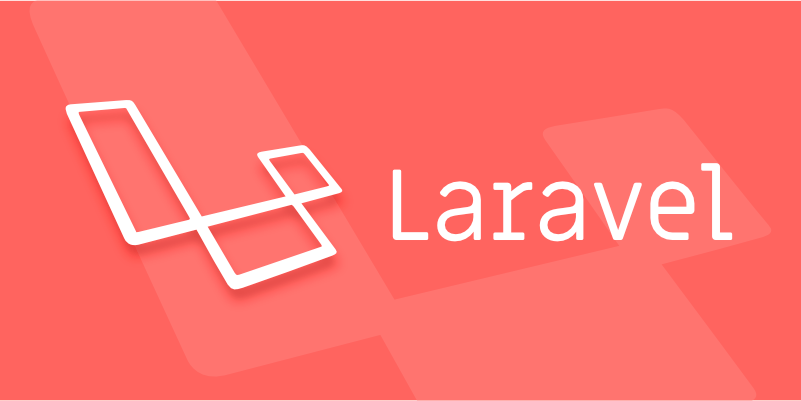To support multiple languages in a Laravel app, use localization by setting up language files, changing the application locale, and handling translation strings, pluralization, and placeholders. 1. Store translations in resources/lang directories with subfolders like en, es, fr, and use key-value arrays or JSON files. 2. Retrieve translations using the __() helper or @lang Blade directive. 3. Change the locale dynamically via App::setLocale(), often based on user preference or URL segments. 4. Use translation strings as keys in JSON for easier management. 5. Handle pluralization with the pipe symbol and trans_choice(), and use placeholders with associative arrays for dynamic values.

When you're building a Laravel app that needs to support multiple languages, localization is the way to go. The good news is, Laravel makes it pretty straightforward.

Setting Up Language Files
Laravel stores language files in the resources/lang directory. Each language has its own subdirectory, like en, es, fr, etc. Inside those folders, you'll place PHP files with arrays of key-value pairs for your translations.
For example:

// resources/lang/es/messages.php
return [
'welcome' => 'Bienvenido',
];You can then retrieve this value using the __() helper or the @lang Blade directive:
echo __('messages.welcome');
// or in Blade:
@lang('messages.welcome')- Keep your keys consistent across language files.
- Use meaningful file names like
auth.php,pagination.php, etc., especially if you're translating Laravel's built-in strings.
Changing the Application Locale
By default, Laravel uses the locale defined in config/app.php. But you’ll often want to change the language based on user preferences or URL segments.

To set the locale dynamically, use:
App::setLocale('es');A common approach is to detect the user’s browser language or allow them to choose from a dropdown and store their preference in the session or database.
You might also see URLs like /es/home, where the first segment defines the language. You can extract that segment using route parameters and call App::setLocale() early in the request lifecycle—maybe in middleware.
Using Translation Strings as Keys
Instead of using placeholder keys like 'welcome' => 'Bienvenido', Laravel also supports using the actual English string as the key:
// resources/lang/es.json
{
"Welcome to our website": "Bienvenido a nuestro sitio web"
}Then in Blade:
@lang("Welcome to our website")This can make translation files easier to manage, especially when working with third-party translation tools.
- JSON-based translations are great for simple projects.
- Make sure to keep your JSON files properly formatted.
- Avoid mixing array-based and JSON-based translations unless you have a good reason.
Handling Pluralization and Placeholders
Sometimes your translations need to change based on numbers or include dynamic values. Laravel handles pluralization using a pipe symbol:
// resources/lang/en/messages.php
'comment' => '{0} No comments|{1} One comment|[2,*] :count comments'In your code:
echo trans_choice('messages.comment', $count, ['count' => $count]);For placeholders, just pass an associative array:
// In lang file:
'greeting' => 'Hello, :name'
// In code:
__('greeting', ['name' => 'John'])These features help you build more natural-sounding translations without hardcoding logic into your views.
That’s most of what you need to start localizing your Laravel app. It’s not overly complicated, but it does require careful organization and consistency.
The above is the detailed content of Implementing Localization in Laravel.. For more information, please follow other related articles on the PHP Chinese website!

Hot AI Tools

Undress AI Tool
Undress images for free

Undresser.AI Undress
AI-powered app for creating realistic nude photos

AI Clothes Remover
Online AI tool for removing clothes from photos.

Clothoff.io
AI clothes remover

Video Face Swap
Swap faces in any video effortlessly with our completely free AI face swap tool!

Hot Article

Hot Tools

Notepad++7.3.1
Easy-to-use and free code editor

SublimeText3 Chinese version
Chinese version, very easy to use

Zend Studio 13.0.1
Powerful PHP integrated development environment

Dreamweaver CS6
Visual web development tools

SublimeText3 Mac version
God-level code editing software (SublimeText3)
 Working with pivot tables in Laravel Many-to-Many relationships
Jul 07, 2025 am 01:06 AM
Working with pivot tables in Laravel Many-to-Many relationships
Jul 07, 2025 am 01:06 AM
ToworkeffectivelywithpivottablesinLaravel,firstaccesspivotdatausingwithPivot()orwithTimestamps(),thenupdateentrieswithupdateExistingPivot(),managerelationshipsviadetach()andsync(),andusecustompivotmodelswhenneeded.1.UsewithPivot()toincludespecificcol
 Sending different types of notifications with Laravel
Jul 06, 2025 am 12:52 AM
Sending different types of notifications with Laravel
Jul 06, 2025 am 12:52 AM
Laravelprovidesacleanandflexiblewaytosendnotificationsviamultiplechannelslikeemail,SMS,in-appalerts,andpushnotifications.Youdefinenotificationchannelsinthevia()methodofanotificationclass,andimplementspecificmethodsliketoMail(),toDatabase(),ortoVonage
 Strategies for optimizing Laravel application performance
Jul 09, 2025 am 03:00 AM
Strategies for optimizing Laravel application performance
Jul 09, 2025 am 03:00 AM
Laravel performance optimization can improve application efficiency through four core directions. 1. Use the cache mechanism to reduce duplicate queries, store infrequently changing data through Cache::remember() and other methods to reduce database access frequency; 2. Optimize database from the model to query statements, avoid N 1 queries, specifying field queries, adding indexes, paging processing and reading and writing separation, and reduce bottlenecks; 3. Use time-consuming operations such as email sending and file exporting to queue asynchronous processing, use Supervisor to manage workers and set up retry mechanisms; 4. Use middleware and service providers reasonably to avoid complex logic and unnecessary initialization code, and delay loading of services to improve startup efficiency.
 Managing database state for testing in Laravel
Jul 13, 2025 am 03:08 AM
Managing database state for testing in Laravel
Jul 13, 2025 am 03:08 AM
Methods to manage database state in Laravel tests include using RefreshDatabase, selective seeding of data, careful use of transactions, and manual cleaning if necessary. 1. Use RefreshDatabasetrait to automatically migrate the database structure to ensure that each test is based on a clean database; 2. Use specific seeds to fill the necessary data and generate dynamic data in combination with the model factory; 3. Use DatabaseTransactionstrait to roll back the test changes, but pay attention to its limitations; 4. Manually truncate the table or reseed the database when it cannot be automatically cleaned. These methods are flexibly selected according to the type of test and environment to ensure the reliability and efficiency of the test.
 Choosing between Laravel Sanctum and Passport for API authentication
Jul 14, 2025 am 02:35 AM
Choosing between Laravel Sanctum and Passport for API authentication
Jul 14, 2025 am 02:35 AM
LaravelSanctum is suitable for simple, lightweight API certifications such as SPA or mobile applications, while Passport is suitable for scenarios where full OAuth2 functionality is required. 1. Sanctum provides token-based authentication, suitable for first-party clients; 2. Passport supports complex processes such as authorization codes and client credentials, suitable for third-party developers to access; 3. Sanctum installation and configuration are simpler and maintenance costs are low; 4. Passport functions are comprehensive but configuration is complex, suitable for platforms that require fine permission control. When selecting, you should determine whether the OAuth2 feature is required based on the project requirements.
 Implementing Database Transactions in Laravel?
Jul 08, 2025 am 01:02 AM
Implementing Database Transactions in Laravel?
Jul 08, 2025 am 01:02 AM
Laravel simplifies database transaction processing with built-in support. 1. Use the DB::transaction() method to automatically commit or rollback operations to ensure data integrity; 2. Support nested transactions and implement them through savepoints, but it is usually recommended to use a single transaction wrapper to avoid complexity; 3. Provide manual control methods such as beginTransaction(), commit() and rollBack(), suitable for scenarios that require more flexible processing; 4. Best practices include keeping transactions short, only using them when necessary, testing failures, and recording rollback information. Rationally choosing transaction management methods can help improve application reliability and performance.
 Handling HTTP Requests and Responses in Laravel.
Jul 16, 2025 am 03:21 AM
Handling HTTP Requests and Responses in Laravel.
Jul 16, 2025 am 03:21 AM
The core of handling HTTP requests and responses in Laravel is to master the acquisition of request data, response return and file upload. 1. When receiving request data, you can inject the Request instance through type prompts and use input() or magic methods to obtain fields, and combine validate() or form request classes for verification; 2. Return response supports strings, views, JSON, responses with status codes and headers and redirect operations; 3. When processing file uploads, you need to use the file() method and store() to store files. Before uploading, you should verify the file type and size, and the storage path can be saved to the database.
 Generating URLs for Named Routes in Laravel.
Jul 16, 2025 am 02:50 AM
Generating URLs for Named Routes in Laravel.
Jul 16, 2025 am 02:50 AM
The most common way to generate a named route in Laravel is to use the route() helper function, which automatically matches the path based on the route name and handles parameter binding. 1. Pass the route name and parameters in the controller or view, such as route('user.profile',['id'=>1]); 2. When multiple parameters, you only need to pass the array, and the order does not affect the matching, such as route('user.post.show',['id'=>1,'postId'=>10]); 3. Links can be directly embedded in the Blade template, such as viewing information; 4. When optional parameters are not provided, they are not displayed, such as route('user.post',






